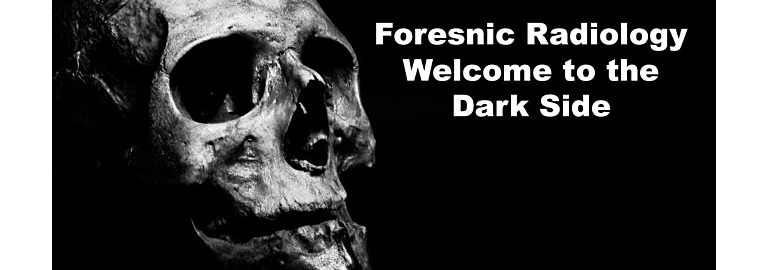
It’s not uncommon for hospital imaging departments to get requests to image the deceased to gather forensic evidence needed by the police or investigators. This is called forensic radiology. Radiography is commonly used in the collection of forensic evidence and is especially useful for confirming the identity of both living and deceased subjects. It can be used for identifying pre-existing skeletal trauma, assisting in the determination and/or confirmation of the cause of death, and locating hidden foreign bodies. Some types of foreign bodies include bullet fragments, fragments of explosives and packages of illegal substances. This is why it is important for radiographers to understand the appropriate forensic imaging protocols for each situation, as well as the legal and ethical issues involved.
The coroner relies on radiographers to provide clues that cannot be seen any other way and provide digital evidence that can help solve cases. As radiographers, you solve puzzles. The deceased are brought in on a gurney in a “body bag.” Bodies are often put on the imaging table and imaged without even opening the bag. However, there are times when only specific body parts need to be imaged. This can include body parts that are no longer attached to the body. In those cases, there is no shroud to cover the object being imaged.
Forensic imaging can be done with X-ray or with CT. The determination lies at the request of the coroner. Sometimes entire CT scans of the body are acquired. Ultimately, the goal is to solve the Cause of Death and the Manner of Death. The Cause of Death is determined through an investigation by the coroner. There are five Manners of Death: Natural, Homicide, Suicide, Accidental, and lastly undetermined.
What kind of cases require forensic radiography?
- Homicides
- suicides
- decomposed bodies
- infant deaths
- penetrating traumas
- burn victims and
- unidentified bodies
- skeletal surveys for suspected child abuse
Radiography is also used as a Medicolegal Investigative Tool
- Fingerprints: Specific imaging techniques using radiographs can uncover latent fingerprints from difficult surfaces such as plastic, biological material, and colored or printed paper.
- Documents:Radiographs can reveal surface details in the paper as well as indentations, obliterations, alterations, and watermarks.
- Serial Numbers: Concealed or altered serial numbers may be visualized in radiographs as well as identifying markings hidden inside the seams of clothing.
- Bomb Detection:X-ray images provide a more detailed look at the explosive devices that also include a battery and wiring.
As you can clearly see, Radiology is an important aspect of forensics. Click here to learn more about the educational framework needed to get into forensic radiology.
